O post Irrigation: The Fourth Agricultural Revolution in Brazil apareceu primeiro em Agribrasilis - Inside Agribusiness.
]]>Rodrigo Christofoletti Bernardi is a product specialist at Lindsay Latin America, a company focused on solutions for irrigation, infrastructure and industrial technology. Bernardi is an environmental technician and agricultural engineer graduated from the Federal University of Lavras.

Rodrigo Bernardi, product specialist at Lindsay Latin America
AgriBrasilis – How important is irrigation for Brazil?
Rodrigo Bernardi – Irrigation can be considered the “fourth agricultural revolution” for Brazil due to its ability to increase yield, make agriculture more resilient to climate change, expand the cultivated area, promote the efficient use of water resources and generate impact positive socioeconomic status in rural regions.
AgriBrasilis – What is needed to achieve this revolution? Why do farmers irrigate so little?
Rodrigo Bernardi – Electricity infrastructure is a significant challenge for the adoption of irrigation in rural areas, as many regions still lack this service. Furthermore, obtaining environmental licenses and permits for water use is an important, but not necessarily negative, step in ensuring the environmental sustainability of irrigation projects.
Regarding financing, strengthening credit through private banks can boost the development of the agricultural sector, allowing more farmers to have access to resources to invest in irrigation systems. In the specific case of Lindsay, DLL’s role as a strategic partner has been fundamental in facilitating negotiations and facilitating farmers’ access to irrigation equipment.
“Electricity infrastructure is a significant challenge for the adoption of irrigation in rural areas, as many regions still lack this service”
AgriBrasilis – What technologies are being developed for irrigation?
Rodrigo Bernardi – Lindsay is introducing the first high-performance Corner in Brazil, a piece of equipment designed to expand the irrigated area of farms, reaching areas that standard central pivots cannot reach. Additionally, the new FieldNET Next Gen platform makes it easier to use technology in irrigation, allowing farmers to monitor, manage and control their irrigation equipment from anywhere through an easy-to-use app with real-time information.
An important new feature is Lindsay’s global partnership with Pessl, the company that supplies Metos meteorological stations. These stations provide up-to-date weather information, helping growers manage the irrigation system more efficiently to increase field yield.
AgriBrasilis – How do corner pivots work and what are their benefits?
Rodrigo Bernardi – The Corner is an intelligent extension of the central pivot, allowing an increase of up to 90 meters in radius, adjustable depending on the area where it is installed. In places where the presence of roads, power lines, forests and other obstacles would make it impossible to install a new pivot span, the Corner adapts to this uneven terrain, opening and closing the last span as necessary. This results in an average increase of 25% in the irrigated productive area in projects carried out in Brazil.
In addition to the increase in irrigated area, which was previously unplanted, the benefits of Corner include the optimization of agricultural operations, such as planting, cultural treatments and harvesting, which previously required many maneuvers on tractors (increasing the cost). This improvement in efficiency is accompanied by uniformity in water application, as well as management, through the FieldNET platform, the same used for the central pivot.
AgriBrasilis – How has the expansion of the irrigated area in the country evolved? What projects exist to expand the irrigated area?
Rodrigo Bernardi – The Brazilian government has dedicated itself to the modernization and expansion of irrigation infrastructure, promoting the construction and improvement of energy transmission systems, in addition to approving legislation for the use of dams. It is also reviewing water licensing and environmental licensing processes, which are often considered antiquated and outdated.
The adoption of advanced irrigation technologies, including remote monitoring, has played a crucial role in the more efficient use of water resources, contributing to expanding the irrigated area for various crops. In several regions, harnessing groundwater sources such as aquifers has become a key strategy, especially where the use of surface water would not be viable.
Lindsay, for example, has expanded its distributor network, allowing access to previously unserved areas, which is essential for the advancement of irrigation in different regions.
AgriBrasilis – Do high temperatures require changes in irrigation management? Why?
Rodrigo Bernardi – High temperatures require changes in irrigation management due to an increase in the rate of plant evapotranspiration, which leads to faster water stress and greater water loss through soil evaporation. It is necessary to provide adequate water for plants to face the heat, adjusting the schedule and amount of irrigation. Maximizing the efficiency of water use is essential, avoiding both waste and scarcity.
Another important factor in irrigation is air conditioning: during the application of water, a microclimate is created in the pivot area. High temperatures not only cause evapotranspiration, but can also cause physical damage to the plant.
AgriBrasilis – What are the yield gains and costs of irrigation for large crops?
Rodrigo Bernardi – Irrigation enables a controlled supply of water to plants, resulting in a significant increase in production per hectare, especially in regions with water scarcity. With irrigation, plants have continuous access to water, minimizing the risk of losses due to drought and ensuring more consistent and predictable harvests. In some regions, irrigation allows cultivation throughout the year, increasing land use and enabling multiple annual harvests (5 harvests in 2 years). The use of automation technologies, such as FieldNET, which helps farmers to enhance the use of irrigation, increases yield and reduces labor costs and input costs, such as electricity.
READ MORE:
There Are 43 Populations of Herbicide-Resistant Weeds in Argentina
O post Irrigation: The Fourth Agricultural Revolution in Brazil apareceu primeiro em Agribrasilis - Inside Agribusiness.
]]>O post Irrigação: a quarta revolução agrícola apareceu primeiro em Agribrasilis - Inside Agribusiness.
]]>Rodrigo Christofoletti Bernardi é especialista em produtos na Lindsay América Latina, empresa focada em soluções para irrigação, infraestrutura e tecnologia industrial. Bernardi é técnico em meio ambiente e engenheiro agrônomo formado pela Universidade Federal de Lavras.

Rodrigo Christofoletti, especialista em produtos na Lindsay América Latina
AgriBrasilis – Qual é a importância da irrigação para o Brasil?
Rodrigo Bernardi – A irrigação pode ser considerada a “quarta revolução agrícola” para o Brasil devido a sua capacidade de aumentar a produtividade, tornar a agricultura mais resiliente às mudanças climáticas, expandir a área cultivada, promover o uso eficiente dos recursos hídricos e gerar impacto socioeconômico positivo nas regiões rurais.
AgriBrasilis – O que falta para alcançarmos essa revolução? Por que os agricultores irrigam tão pouco?
Rodrigo Bernardi – A infraestrutura de energia elétrica é um desafio significativo para a adoção da irrigação em áreas rurais, pois muitas regiões ainda carecem desse serviço. Além disso, a obtenção de licenças ambientais e outorgas para o uso de água é uma etapa importante, mas não necessariamente negativa, para garantir a sustentabilidade ambiental dos projetos de irrigação.
Com relação ao financiamento, o fortalecimento dos créditos através de bancos privados pode impulsionar o desenvolvimento do setor agrícola, permitindo que mais produtores tenham acesso aos recursos para investir em sistemas de irrigação. No caso específico da Lindsay, o papel do DLL como parceiro estratégico tem sido fundamental para viabilizar as negociações e facilitar o acesso dos produtores aos equipamentos de irrigação.
“A infraestrutura de energia elétrica é um desafio significativo para a adoção da irrigação em áreas rurais, pois muitas regiões ainda carecem desse serviço”
AgriBrasilis – Que tecnologias estão sendo desenvolvidas para irrigação?
Rodrigo Bernardi – A Lindsay está introduzindo no Brasil o primeiro Corner de alta performance, um equipamento projetado para expandir a área irrigada das fazendas, alcançando áreas que os pivôs centrais padrão não conseguem atingir. Além disso, a nova plataforma do FieldNET Next Gen facilita o uso da tecnologia na irrigação, permitindo que os produtores monitorem, gerenciem e controlem seus equipamentos de irrigação de qualquer lugar através de um aplicativo fácil de usar, com informações em tempo real.
Uma novidade importante é a parceria global da Lindsay com a Pessl, empresa fornecedora das estações meteorológicas da Metos. Essas estações fornecem informações atualizadas sobre o clima, ajudando os produtores a gerenciar o sistema de irrigação de forma mais eficiente para aumentar a produtividade do campo.
AgriBrasilis – Como funcionam os pivôs do tipo “corner” e quais são seus benefícios?
Rodrigo Bernardi – O Corner é uma extensão inteligente do pivô central, permitindo um acréscimo de até 90 metros de raio, ajustável conforme a área onde está instalado. Em locais onde a presença de estradas, linhas de energia, matas e outros obstáculos impossibilitaria a instalação de um novo vão de pivô, o Corner se adapta a esse terreno irregular, abrindo e fechando o último vão conforme necessário. Isso resulta em aumento médio de 25% na área produtiva irrigada em projetos realizados no Brasil.
Além do aumento na área irrigada, que antes não era plantado, os benefícios do Corner incluem a otimização das operações agrícolas, como plantio, tratos culturais e colheita, que antes eram necessárias muitas manobras nos tratores (onera o custo). Essa melhoria na eficiência é acompanhada pela uniformidade na aplicação de água, bem como no gerenciamento, através da plataforma FieldNET, a mesma utilizada para o pivô central.
AgriBrasilis – Como tem evoluído a expansão da área irrigada no país? Que projetos existem para ampliar a área irrigada?
Rodrigo Bernardi – O governo brasileiro tem se dedicado à modernização e expansão da infraestrutura de irrigação, promovendo a construção e aprimoramento de sistemas de transmissão de energia, além de aprovar legislações para o uso de barragens. Também está revendo os processos de outorga de água e licenciamentos ambientais, muitas vezes considerados antiquados e desatualizados.
A adoção de tecnologias avançadas de irrigação, incluindo o monitoramento remoto, tem desempenhado papel crucial na utilização mais eficiente dos recursos hídricos, contribuindo para expandir a área irrigada em diversas culturas. Em várias regiões, o aproveitamento de fontes de água subterrânea, como aquíferos, tornou-se uma estratégia fundamental, especialmente onde o uso de água superficial não seria viável.
A Lindsay, por exemplo, tem expandido sua rede de distribuidores, permitindo acesso a áreas anteriormente não atendidas, o que é fundamental para o avanço da irrigação em regiões diversas.
AgriBrasilis – Altas temperaturas exigem mudanças no manejo da irrigação? Por quê?
Rodrigo Bernardi – Altas temperaturas exigem mudanças no manejo da irrigação devido ao aumento da taxa de evapotranspiração das plantas, que leva a um estresse hídrico mais rápido e uma maior perda de água por evaporação do solo. É necessário fornecer água adequadamente para as plantas enfrentarem o calor, ajustando o cronograma e a quantidade de irrigação. Maximizar a eficiência do uso da água é essencial, evitando tanto o desperdício quanto a escassez.
Outro fator importante da irrigação é a climatização: durante a aplicação de água, é criado um microclima na área do pivô. Temperaturas altas não só causam a evapotranspiração, mas podem também causar dano físico à planta.
AgriBrasilis – Quais são os ganhos em produtividade e os custos da irrigação para grandes culturas?
Rodrigo Bernardi – A irrigação possibilita um fornecimento controlado de água às plantas, resultando em aumento significativo na produção por hectare, especialmente em regiões com escassez de água. Com a irrigação, as plantas têm acesso contínuo à água, minimizando o risco de perdas devido à seca e garantindo colheitas mais consistentes e previsíveis. Em algumas regiões, a irrigação permite o cultivo ao longo de todo o ano, aumentando a utilização da terra e possibilitando múltiplas safras anuais (5 safras em 2 anos). O uso de tecnologias de automação, como o FieldNET, que ajuda o produtor a potencializar o uso da irrigação, aumenta a produtividade e reduz custos com mão de obra e custos com insumos, como a energia elétrica.
LEIA MAIS:
Existem 43 populações de plantas daninhas resistentes aos herbicidas na Argentina
O post Irrigação: a quarta revolução agrícola apareceu primeiro em Agribrasilis - Inside Agribusiness.
]]>O post Overview by AgriBrasilis (04/20/24 – 04/26/24) apareceu primeiro em Agribrasilis - Inside Agribusiness.
]]>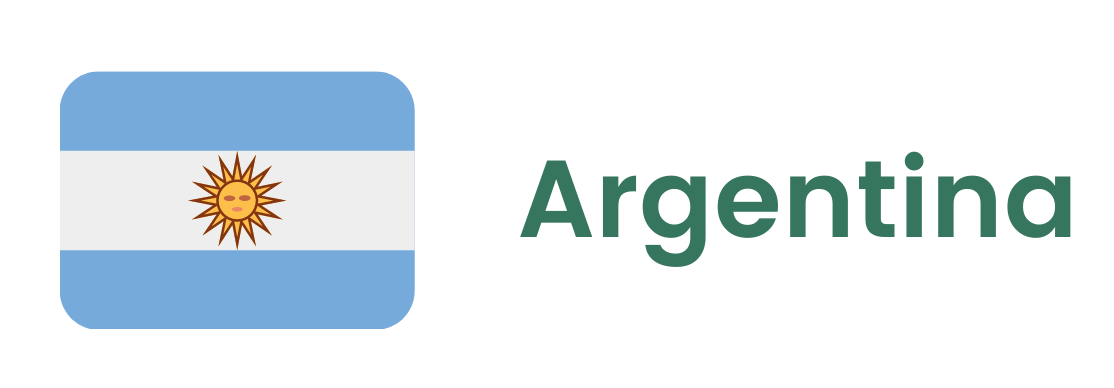
Fiscal surplus of 0.2% of the country’s GDP in the 1Q/2024 was the first recorded since 2008. Argentina reached a financial surplus of more than US$ 315.4 million in March. (Ministry of Economy)
Damages caused by the corn leafhopper (Dalbulus maidis) might be worse than expected. According to Sebastian Gavalda, director of Globaltecnos in Argentina, losses could reach up to 10 million tonnes, which represents more than a 18% reduction when compared to the estimates of 53 million tonnes of corn for the harvest. “Officially, some institutions have estimated from 5 to 6 million tonnes lost, but we calculate between 8 and 10 million. This is a very big impact for the affected farmers. Some will have zero grains harvested and others will have losses of up to 50%, 60%, or 70%”, said Gavalda. (Globaltecnos)
Area destined for wheat should reach 5.9 million hectares in 2024/25. This represents a drop of 6.9% when compared to the average of the past five seasons. (Buenos Aires Cereal Exchange)

Minister Gilmar Mendes from the Federal Supreme Court has decided on April 22nd to determine the beginning of a conciliation process for actions regarding the timeframe for the demarcation of indigenous lands. With the decision, actions regarding this issue must be suspended until the Court’s final decision. Parties involved will have 30 days to present conciliation proposals. (STF)
Ministry of Agriculture has accepted the Federal Prosecutor Office’s recommendation not to authorize changes in the soybean fallow period to control Soybean Asian Rust in the State of Mato Grosso, without first obtaining a demonstration of “exceptional condition”, provided for in art. 10, of Ordinance SDA/MAPA No. 865. (MAPA)
Timbro, a Brazilian international trade platform, plans to increase sugar exports by more than 40% in 2024, reaching 2 million tonnes. (Timbro)
Yields at the beginning of the Robusta and Conilon coffee harvest are below expectations, a result of extremely high temperatures during the last summer. “What we are hearing from the farmers is that the grain this year is smaller than last year, which means that they did not develop as they should”, said Luiz Carlos Bastianello, president of Cooabriel, the largest conilon coffee cooperative in the country. (Cooabriel)
Brazilian Association of Corn Farmers elected a new president, Paulo Pusch Bertolini. The entity’s new board of directors should take over from May of 2024 and continue until 2027. In addition, from May onwards, the entity will also represent the country’s sorghum farmers, being then called the Brazilian Association of Corn and Sorghum Farmers. (Abramilho)
National Union of the Animal Feed Industry has announced that the market will increase total production by 2.4% in 2024, compared to 2023, reaching 88.3 million tonnes, including mineral salt. Projection considers that there will be a favorable performance of the poultry and pork production chain, mainly in relation to exports. (Sindirações)
Ricardo Santin was reappointed as president of the Brazilian Animal Protein Association – ABPA. After an assembly held on April 24th, a new council was defined for ABPA, led by Irineo da Costa Rodrigues, president of Lar Cooperativa Agroindustrial. (ABPA)


Demand for dairy products is falling, and per capita consumption decreased to 152 L per year, below the recommendations of the World Health Organization. (Fedegan; Alquería)
According to Bancolombia, the avocado export market is going through a “promising moment”. Growth of 19% in export volume is expected, due to favorable weather conditions, reduced input costs and increased production area. (Grupo Bancolombia)
Still trying to recover from the bad performance of recent years, for the current season Colombia should harvest 12 million bags of coffee, according to Germán Bahamón, president of the National Federation of Coffee Growers. (FNC)

In February, the Mexican economy reversed a trend of four months without growth by achieving an increase of 1.4% in the monthly variation. The Global Economic Activity Indicator presented the best level since March of 2021. The economy was driven by the agricultural sector, which grew 16.5% when compared to January. (Inegi)

The rainy season is starting in the country, which should allow the logistical bottleneck at the Panama Canal to be resolved in time for the busiest period of the year. According to a report from Panama’s Institute of Meteorology and Hydrology, the country started shifting to a more humid seasonal pattern. (PortWatch; Panama’s Institute of Meteorology and Hydrology)


The largest agricultural fair in the countryside of Paraguay, Expo Santa Rita 2024 starts next Saturday, on April 27th. According to the organization, the participation of more than 400 exhibitors has been confirmed, from commerce, services, industry, logistics, agriculture and livestock. (Expo Santa Rita)

In 2023, Peru exported 5,244 tonnes of nuts, a drop of 2.1% in the amount shipped when compared to 2022. Main purchasing country for Peruvian nuts is South Korea, followed by USA. The main nut exporting companies in Peru are: Beneficiadora de Almendras Urkupina S.R.L., with 26.7% of the market; White Lion Nuts S.A.C. (12.2%); Procesadora de Alimentos Santa Isabel and Agrícolas y Forestales S.A.C. (both with 5.4%); Manutata S.A.C. (3.5%). From 2022 to 2023, there was a 23.8% drop in exported value. (FreshFruit)
With the objective to produce 171,938 native seedlings, the Regional Management of Natural Resources and Environmental Management of Cusco is installing four forest nurseries in the districts of Alto Pichigua, Pallpata, Coporaque and Espinar. (Regional Management of Natural Resources and Environmental Management of Cusco)
National Institute of Agrarian Innovation – INIA has developed a new variety of hard yellow corn, called “INIA 627-Pátapo”. According to INIA, this new cultivar could increase corn yields by 72%. The variety has a yield potential of 11.52 to 14.20 tonnes/ha, being tolerant to the fungi Phyllachora maydis, Fusarium spp. and Aspergillus. More than 43 thousand small and medium-sized farmers in the north of the country should benefit from the new variety. (INIA)

Given the record wheat yields over the past two years, Uruguayan farmers are expected to plant more in the 2024/25 season, but total production should decrease slightly. Harvest in 2023/24 is estimated at 1.56 million tonnes. (USDA)

READ MORE:
Low Prices and Lack of Information Propel the Illegal Pesticides Market in Brazil
O post Overview by AgriBrasilis (04/20/24 – 04/26/24) apareceu primeiro em Agribrasilis - Inside Agribusiness.
]]>O post Overview by AgriBrasilis (20/04/24 – 26/04/24) apareceu primeiro em Agribrasilis - Inside Agribusiness.
]]>
Excedente fiscal de 0,2% do PIB do país no primeiro trimestre de 2024 foi o primeiro já registrado desde 2008. Argentina registrou superávit financeiro de mais de US$ 315,4 milhões em março. (Ministério da Economia)
Danos causados pela cigarrinha do milho (Dalbulus maidis) podem ser maiores do que o previsto. Segundo Sebastian Gavalda, diretor da Globaltecnos na Argentina, perdas podem alcançar até 10 milhões de toneladas, o que representa mais de 18% de redução ante estimativas de 53 milhões de toneladas de milho para a safra. “Oficialmente, algumas instituições falam de 5 a 6 milhões de toneladas perdidas, mas nós calculamos entre 8 e 10 milhões. Isso é um impacto muito grande para os produtores afetados. Alguns terão zero grãos colhidos e outros vão ter perdas de 50%, 60%, ou 70%”, disse Gavalda. (Globaltecnos)
Área destinada ao trigo deve alcançar 5,9 milhões de hectares em 2024/25. Valor representa queda de 6,9% ante a média das cinco últimas temporadas. (Bolsa de Cereais de Buenos Aires)

Ministro Gilmar Mendes do STF decidiu em 22/04 determinar instauração de processo de conciliação envolvendo ações sobre o marco temporal para demarcação de terras indígenas. Com a decisão, as ações que tratam da questão devem ser suspensas até decisão final da Corte. Partes envolvidas terão 30 dias para apresentar propostas de conciliação. (STF)
MAPA acatou recomendação do MPF de não autorizar mudanças no período do vazio sanitário para controle da ferrugem asiática no MT, sem antes obter a demonstração da “condição de excepcionalidade”, prevista no art. 10, da Portaria SDA/MAPA nº 865. (MAPA)
Apenas 69% das lavouras de milho do PR estão em boas condições, segundo o Departamento de Economia Rural – Deral. Do restante, 21% são classificadas como médias, e 10% como ruins. De acordo com levantamento do Deral, as lavouras da segunda safra de milho se dividem entre 18% das plantas em desenvolvimento vegetativo, 30% em floração, 49% em frutificação e 3% em maturação. (Deral)
Timbro, plataforma brasileira de comércio internacional, prevê aumentar em mais de 40% suas exportações de açúcar em 2024, alcançando 2 milhões de toneladas. (Timbro)
Produtividade no início da colheita de café robusta e conilon está abaixo do esperado, resultado das temperaturas muito altas durante o verão. “O que estamos ouvindo do produtor é que o grão este ano tem uma ‘peneira menor’ do que no ano passado, ou seja, os grãos não desenvolveram como deveriam”, disse Luiz Carlos Bastianello, presidente da Cooabriel, a maior cooperativa de café conilon do Brasil. (Cooabriel)
Associação Brasileira dos Produtores de Milho elegeu novo presidente, Paulo Pusch Bertolini. Nova diretoria da entidade deve assumir a partir de maio de 2024 e segue até 2027. Além disso, a partir de maio, a entidade irá representar também os produtores de sorgo do país, sendo denominada Associação Brasileira dos Produtores de Milho e Sorgo. (Abramilho)
Sindicato Nacional da Indústria de Alimentação Animal divulgou que o setor ampliará produção total em 2,4% em 2024, ante 2023, alcançando 88,3 milhões de toneladas, incluindo os volumes do sal mineral. Projeção considera desempenho favorável da cadeia produtiva de aves e suínos, principalmente em relação às exportações. (Sindirações)
Ricardo Santin foi reconduzido ao cargo de presidente da Associação Brasileira de Proteína Animal. Após realização de assembleia em 24/04, foi definido um novo conselho para a ABPA, comandado por Irineo da Costa Rodrigues, presidente da Lar Cooperativa Agroindustrial. (ABPA)

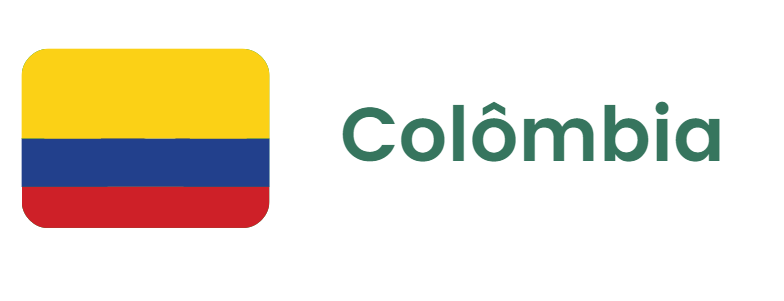
Demanda por produtos lácteos está caindo, e consumo per capita diminuiu para 152 litros por ano, valor abaixo das recomendações da OMS. (Fedegan; Alquería)
Segundo estimativas do Bancolombia, o setor exportador de abacate se encontra em “momento promissor”. Espera-se crescimento de 19% no volume das exportações, em função das condições climáticas favoráveis, redução dos custos dos insumos e aumento da área produtiva. (Grupo Bancolombia)
Ainda tentando se recuperar das quebras dos últimos anos, para a safra atual a Colômbia deve colher 12 milhões de sacas de café, de acordo com Germán Bahamón, presidente da Federação Nacional dos Cafeicultores. (FNC)
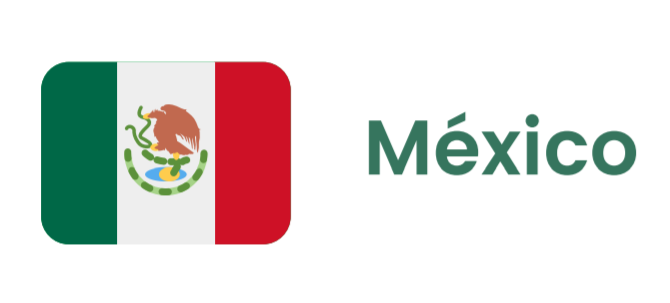
Em fevereiro, a economia mexicana reverteu tendência de quatro meses sem crescimento ao registrar aumento de 1,4 % na variação mensal. Indicador Global de Atividade Econômica apresentou o melhor nível desde março de 2021. Economia foi impulsionada pelo setor agrícola, que cresceu 16,5% ante janeiro. (Inegi)
![]()
Estação chuvosa está iniciando no país, o que deve possibilitar que o gargalo logístico no Canal do Panamá se resolva antes da época mais movimentada do ano. De acordo com relatório do Instituto de Meteorologia e Hidrologia do Panamá, está se iniciando padrão sazonal mais húmido no país. (PortWatch; Instituto de Meteorologia e Hidrologia do Panamá)

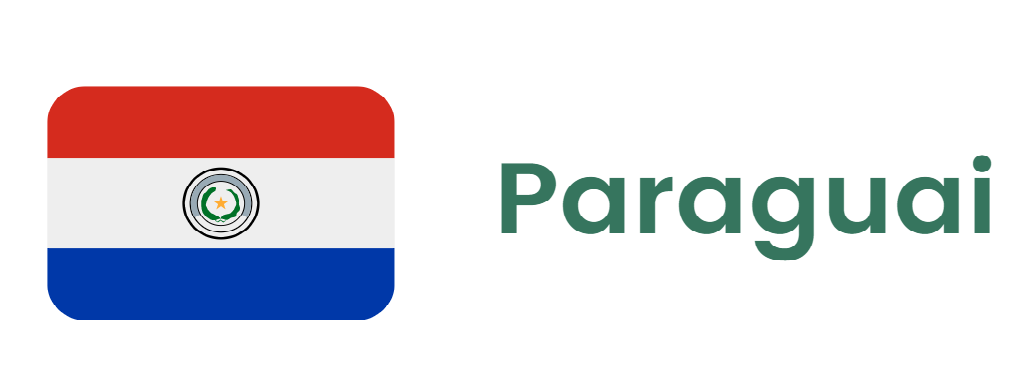
Maior feira agropecuária do interior do Paraguai, Expo Santa Rita 2024 começa no próximo sábado, dia 27/04. De acordo com a organização, já está confirmada a participação de mais de 400 expositores, de diversos segmentos do comércio, serviços, indústria, logística, agricultura e pecuária. (Expo Santa Rita)

Em 2023, o Peru exportou 5.244 toneladas de nozes, o que representou queda de 2,1% no volume embarcado ante 2022. Principal país comprador das nozes peruanas é a Coreia do Sul, seguida pelos EUA. As principais empresas exportadoras de nozes do Peru são: Beneficiadora de Almendras Urkupina S.R.L., com 26,7% do mercado; White Lion Nuts S.A.C. (12,2%); Procesadora de Alimentos Santa Isabel e Agrícolas y Forestales S.A.C. (ambas com 5,4%); Manutata S.A.C. (3,5%). Entre 2022 e 2023, houve queda de 23,8% do valor exportado. (FreshFruit)
Com o objetivo de produzir 171.938 mudas nativas, a Gestão Regional de Recursos Naturais e Gestão Ambiental de Cusco está instalando quatro viveiros florestais nos distritos de Alto Pichigua, Pallpata, Coporaque e Espinar. (Gerencia Regional de Recursos Naturales y Gestión Ambiental de Cusco)
Instituto Nacional de Inovação Agrária – INIA desenvolve nova variedade de milho amarelo duro, denominada “INIA 627-Pátapo”. Segundo o INIA, essa nova cultivar pode apresentar aumentos de produtividade de até 72%. A variedade possui produtividade comercial de 11,52 a 14,20 toneladas/ha, sendo tolerante aos fungos Phyllachora maydis, Fusarium spp. e Aspergillus. Mais de 43 mil pequenos e médios produtores do norte do país devem ser beneficiados pela nova variedade. (INIA)
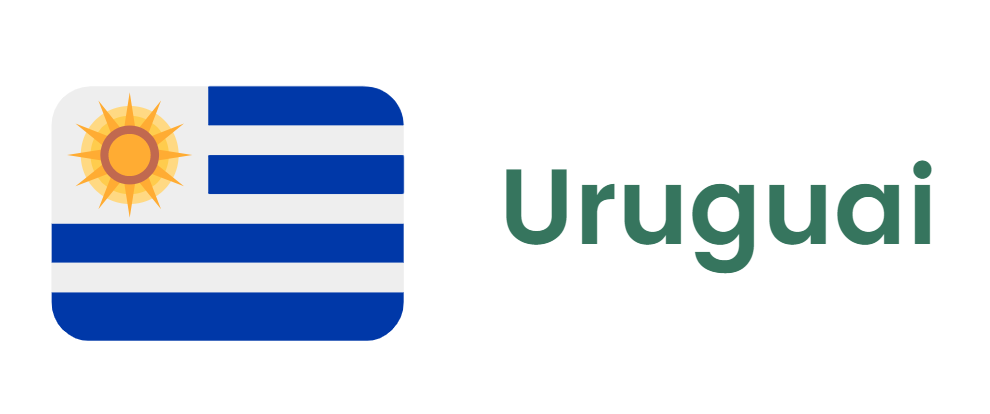
Dados os rendimentos recordes de trigo nos últimos dois anos, espera-se que os agricultores uruguaios plantem mais na temporada 2024/25, mas a produção total deverá cair ligeiramente. Produção em 2023/24 é estimada em 1,56 milhões de toneladas. (USDA)

LEIA MAIS:
Pedidos de recuperação judicial aumentaram 300% para agricultores de perfil Pessoa Física
O post Overview by AgriBrasilis (20/04/24 – 26/04/24) apareceu primeiro em Agribrasilis - Inside Agribusiness.
]]>O post Suspensão imediata das restrições do Ibama sobre o tiametoxam, segundo a Syngenta apareceu primeiro em Agribrasilis - Inside Agribusiness.
]]>De acordo com nota da Syngenta Proteção de Cultivos:
“A Syngenta Proteção de Cultivos confirma que na segunda-feira, dia 22 de abril de 2024, o Tribunal Regional Federal da 1ª Região concedeu uma Tutela de Urgência em sede de Agravo de Instrumento (Processo número: 1009489-39.2024.4.01.0000). Na prática, essa decisão significa que foi determinada a suspensão imediata das restrições de comercialização; e da proibição, suspensão ou restrição de uso, produção ou importação que o Comunicado do IBAMA, publicado em 22 de fevereiro em edição extra do Diário Oficial da União, buscava implementar.
Em sua decisão, o exmo. Desembargador do Tribunal Regional Federal, em harmonia com a manifestação técnica e jurídica do Ministério da Agricultura, esclarece a necessidade de cumprimento da Lei 14.785/2023, que aponta o MAPA, na qualidade de órgão registrante, como a autoridade com competência para adotar as providências oriundas de um processo de reavaliação. O Desembargador também ressalta que, de acordo com a mesma Lei, para restringir usos de um produto já registrado, é necessário que o Ministério estabeleça um plano fitossanitário de substituição do produto, com vistas ao controle de alvos biológicos que porventura possam ficar sem alternativas para manejo integrado de pragas, o que não ocorreu no presente caso.
Conforme nossas manifestações ao longo do processo de reavaliação, reforçamos que Tiametoxam é seguro para todas as aplicações previstas nas bulas dos produtos formulados à base deste ingrediente ativo, estas que contemplam as recomendações de uso necessárias. O posicionamento da companhia é alicerçado em resultados de anos de estudos, que tiveram a participação de diversos pesquisadores, que trouxeram bases científicas sólidas e respaldam nossos argumentos.
O Tiametoxam é uma importante ferramenta para a agricultura brasileira, fundamental para o plantio de cultivos como o milho, soja, algodão, cana-de-açúcar, café, arroz e laranja. Ele também está registrado para uso em mais de 80 países, incluindo Argentina, Austrália, Canadá, China, Estados Unidos, Japão e México.“
LEIA MAIS:
Nova Lei dos Agrotóxicos é sancionada após 23 anos
O post Suspensão imediata das restrições do Ibama sobre o tiametoxam, segundo a Syngenta apareceu primeiro em Agribrasilis - Inside Agribusiness.
]]>O post Existem 43 populações de plantas daninhas resistentes aos herbicidas na Argentina apareceu primeiro em Agribrasilis - Inside Agribusiness.
]]>Fernando Oreja é pesquisador da Oregon State University, e especialista em plantas daninhas da Argentina. Oreja é engenheiro agrônomo e doutor em ciências agrárias pela Faculdade de Agronomia da Universidade de Buenos Aires, com pós-doutorado pela North Carolina State University.
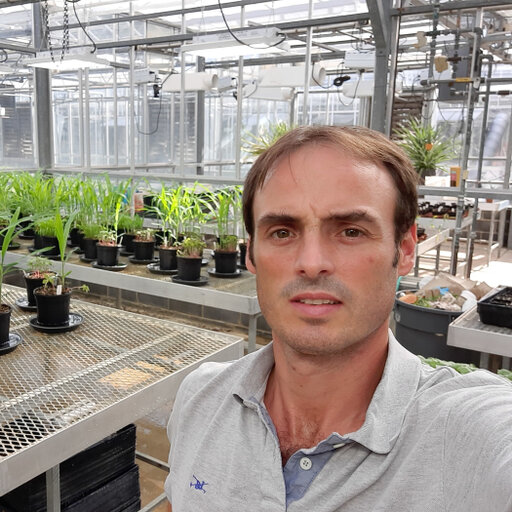
Fernando Oreja, especialista em plantas daninhas
AgriBrasilis – Por que a população de plantas daninhas resistentes na Argentina está aumentando?
Fernando Oreja – A população de plantas daninhas do país está aumentando devido ao uso repetido dos mesmos herbicidas. A mudança no sistema de semeadura, do preparo convencional para o sistema de plantio, eliminou o controle mecânico de plantas daninhas e seu controle passou a depender exclusivamente de herbicidas. Além disso, o plantio direto foi possível graças à adoção de culturas tolerantes a herbicidas, que permitiram a aplicação dos produtos quantas vezes fosse necessário, mesmo com a cultura estabelecida. Isto aumentou a pressão de seleção para os herbicidas, principalmente no caso do glifosato.
AgriBrasilis – Quais são as perspectivas para a resistência de plantas daninhas no país? Quantos casos de resistência múltipla existem?
Fernando Oreja – Na Argentina, até o momento em que publicamos nossa última pesquisa, existem 43 populações de plantas daninhas resistentes aos herbicidas, que pertencem a 24 espécies diferentes. Dessas 43 populações, existem 9 populações com resistência múltipla, sendo a grande maioria resistente ao glifosato.
O herbicida com mais casos de resistência é de longe o glifosato, com 92% das populações resistentes, seguido pelos inibidores de ALS, com 29%, e auxínicos, com 17%. Apenas 8% das populações são resistentes aos inibidores de ACCase, e 4% aos PPOs.
AgriBrasilis – O glifosato é o herbicida com mais casos de resistência. As empresas agroquímicas forneceram orientações sobre a aplicação adequada do produto?
Fernando Oreja – Sim. No começo, considerava-se que esse herbicida apresentava uma baixa probabilidade de aparecimento de populações resistentes ante outros herbicidas, mas uma vez que começaram a aparecer casos de resistência, as empresas de pesticidas começaram a fazer recomendações para reduzir o surgimento de novas populações resistentes. Por exemplo, algumas dessas recomendações são: aplicar a dose comercial do herbicida, com o tamanho de planta sugerido nos rótulos dos produtos, utilizar água de qualidade adequada, e evitar misturas de herbicidas com antagonismo, etc.
AgriBrasilis – Quais plantas daninhas são mais preocupantes e em quais culturas? Quais regiões da Argentina são as mais afetadas?
Fernando Oreja – As plantas daninhas mais preocupantes são os carurus, ou Amaranthus hybridus e Amaranthus palmeri, seguidas pelo azevém perene e anual (Lolium perene e Lolium multiflorum) e espécies pertencentes à família Brassicaceae, como Raphanus sativus, Brassica rapa, Brassica napus e Hirschfeldia incana. A buva (Conyza sumatrensis e Conyza bonariensis) também é uma planta daninha importante.
A cultura com maior número de populações resistentes é a soja, com 74% das espécies, com muita resistência ao glifosato e aos inibidores de ALS, seguida pelo milho, com 40% de resistência ao glifosato e aos inibidores de ALS. O trigo é a terceira cultura com maior número de populações, com 30% (maior incidência de resistência dos inibidores de ACCase).
As regiões mais afetadas do país são a Zona Central e Zona Sul das províncias de Santa Fé e Córdoba, onde predominam as espécies de plantas daninhas de verão, e a zona sul da província de Buenos Aires, típica área de trigo, onde predominam as espécies de inverno.
AgriBrasilis – Que medidas podem mitigar o problema das plantas daninhas resistentes? O “Manejo Integrado” é a única resposta?
Fernando Oreja – Sim. Como o aparecimento de plantas daninhas resistentes é um fenômeno evolutivo, retirar o fator que está selecionando os indivíduos (nesse caso, o herbicida) é a melhor forma de reduzir o crescimento dessas populações.
Retirar o herbicida do sistema agrícola pode não ser uma tarefa simples, e para isso consideramos que devem ser adotadas medidas de gestão integrada, que considerem todas as opções de controle: distância entre linhas, densidade de plantio, plantio de genótipos mais competitivos, modificação de datas de semeadura, rotação de culturas, adoção de culturas de cobertura, a rotação de herbicidas com diferentes modos de ação, combinação de herbicidas residuais e de contato, uso de doses comerciais de herbicidas e com plantas de tamanho adequado, utilização do controle mecânico quando possível, etc.
LEIA MAIS:
Plantas daninhas resistentes ameaçam a produção de soja no MT
O post Existem 43 populações de plantas daninhas resistentes aos herbicidas na Argentina apareceu primeiro em Agribrasilis - Inside Agribusiness.
]]>O post Immediate Suspension in Brazil of Ibama’s Restrictions on Thiamethoxam, According to Syngenta apareceu primeiro em Agribrasilis - Inside Agribusiness.
]]>Official Court Decision regarding thiamethoxam
According to Syngenta Crop Protection’s note:
“Syngenta Crop Protection confirms that on Monday, April 22nd of 2024, the Brazilian Federal Regional Court of the 1st Region granted an Urgent Protection in the form of an Interlocutory Appeal (Case number: 1009489-39.2024.4.01.0000). In practice, this decision means that there should be the immediate withdrawal of restrictions regarding the commercialization and the prohibition, suspension or restriction of use, production or import of Thiamethoxam that was determined by IBAMA’s Official Notice, published on February 22nd of 2024 in the Official Federal Gazette of Brazil.
In their decision, the Judge of the Federal Regional Court, in compliance with the technical and legal statement of the Ministry of Agriculture, clarifies the need to comply with Law No. 14785/2023, which appoints the Ministry of Agriculture – MAPA, as the pesticide registering agency, as the authority with competence to adopt measures arising from a pesticide reevaluation process. The Judge also highlights that, in accordance with the same Law, to restrict the use of an already registered product, it is necessary for the Ministry of Agriculture to establish a phytosanitary plan to replace the product, with the aim of controlling biological targets that may be left without control alternatives in the integrated pest management, which did not occur in this present case.
According to our statements throughout the reevaluation process, we reinforce that Thiamethoxam is safe for all applications provided for in the leaflets of formulated products based on this active ingredient, which include the necessary recommendations for use. The company’s position is based on the results of years of studies, which included the participation of several researchers, who brought solid scientific foundations and support to our arguments.
Thiamethoxam is an important tool for Brazilian agriculture, essential for planting crops such as corn, soybeans, cotton, sugarcane, coffee, rice and oranges. It is also registered for use in more than 80 countries, including Argentina, Australia, Canada, China, the US, Japan and Mexico.“
READ MORE:
Court Decisions Continue for Pesticide Registration in Brazil in 2024
O post Immediate Suspension in Brazil of Ibama’s Restrictions on Thiamethoxam, According to Syngenta apareceu primeiro em Agribrasilis - Inside Agribusiness.
]]>O post Suspensão imediata das restrições do Ibama sobre o tiametoxam, segundo a Syngenta apareceu primeiro em Agribrasilis - Inside Agribusiness.
]]>De acordo com nota da Syngenta Proteção de Cultivos:
“A Syngenta Proteção de Cultivos confirma que na segunda-feira, dia 22 de abril de 2024, o Tribunal Regional Federal da 1ª Região concedeu uma Tutela de Urgência em sede de Agravo de Instrumento (Processo número: 1009489-39.2024.4.01.0000). Na prática, essa decisão significa que foi determinada a suspensão imediata das restrições de comercialização; e da proibição, suspensão ou restrição de uso, produção ou importação que o Comunicado do IBAMA, publicado em 22 de fevereiro em edição extra do Diário Oficial da União, buscava implementar.
Em sua decisão, o exmo. Desembargador do Tribunal Regional Federal, em harmonia com a manifestação técnica e jurídica do Ministério da Agricultura, esclarece a necessidade de cumprimento da Lei 14.785/2023, que aponta o MAPA, na qualidade de órgão registrante, como a autoridade com competência para adotar as providências oriundas de um processo de reavaliação. O Desembargador também ressalta que, de acordo com a mesma Lei, para restringir usos de um produto já registrado, é necessário que o Ministério estabeleça um plano fitossanitário de substituição do produto, com vistas ao controle de alvos biológicos que porventura possam ficar sem alternativas para manejo integrado de pragas, o que não ocorreu no presente caso.
Conforme nossas manifestações ao longo do processo de reavaliação, reforçamos que Tiametoxam é seguro para todas as aplicações previstas nas bulas dos produtos formulados à base deste ingrediente ativo, estas que contemplam as recomendações de uso necessárias. O posicionamento da companhia é alicerçado em resultados de anos de estudos, que tiveram a participação de diversos pesquisadores, que trouxeram bases científicas sólidas e respaldam nossos argumentos.
O Tiametoxam é uma importante ferramenta para a agricultura brasileira, fundamental para o plantio de cultivos como o milho, soja, algodão, cana-de-açúcar, café, arroz e laranja. Ele também está registrado para uso em mais de 80 países, incluindo Argentina, Austrália, Canadá, China, Estados Unidos, Japão e México.“
LEIA MAIS:
Nova Lei dos Agrotóxicos é sancionada após 23 anos
O post Suspensão imediata das restrições do Ibama sobre o tiametoxam, segundo a Syngenta apareceu primeiro em Agribrasilis - Inside Agribusiness.
]]>O post Lack of Employees Has Reduced Speed of Pesticide Registration at Ministry of Agriculture, Brazil apareceu primeiro em Agribrasilis - Inside Agribusiness.
]]>Tatiane Almeida do Nascimento is head of the Formulated Product Registration Division at the Agricultural Defense Secretariat of the Ministry of Agriculture, Livestock and Food Supply of Brazil – MAPA, an agronomist, and federal agricultural tax auditor.
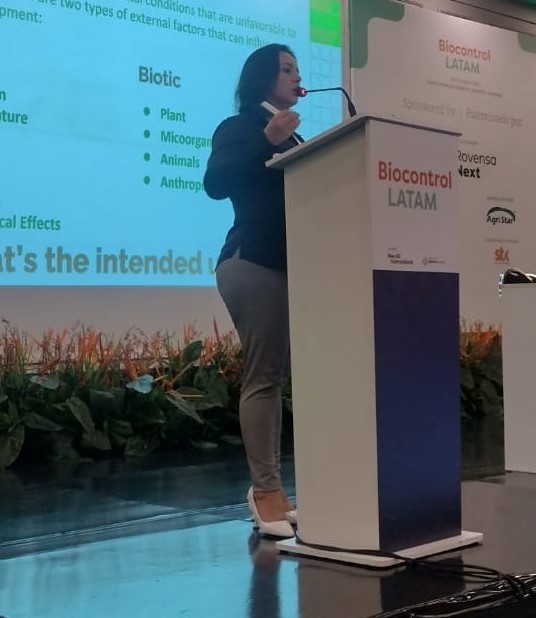
Tatiane Almeida, head of the Formulated Product Registration Division at MAPA
AgriBrasilis – Pesticides Law No. 14,785 was approved on 12/28/2023. In practical terms, what has changed?
Tatiane Almeida – The governance of the registry is the responsibility of the Ministry of Agriculture, but health and environmental agencies remain responsible for their respective areas.
AgriBrasilis – The law establishes 360 days to adapt to the new devices. What should be regulated?
Tatiane Almeida – It is worth clarifying that the law is already in force and all its provisions are being regulated. The 360-day deadline is for users to adapt to the new devices and is also the deadline for SISPA, a unified system for registering pesticides, to be implemented.
“Most errors occur due to lack of documents and the delay depends on each company being able to present documents that already contain specifications in standards”
AgriBrasilis – You said that the lack of employees has reduced the speed of approving pesticides. In addition to the single protocol system, what is being done to alleviate this problem? Will hiring be carried out?
Tatiane Almeida – A public competition is scheduled to hire Federal Agricultural Tax Auditors (AFFA), but, due to the lack of agronomists throughout the ministry, it is difficult to say that this competition will make up for the lack of these professionals. Temporary hiring of professionals with training in chemistry has already been carried out, to overcome the liability of chemical products that are in the analysis queue.
AgriBrasilis – How should the single protocol system work?
Tatiane Almeida – It will be a system as provided for in Law 14,785/2023, in which companies will be able to request product registration. In this system, MAPA, Ibama, and Anvisa will have access to studies and carry out their analyses.
AgriBrasilis – What are the most frequent errors in registration processes? How much does this delay the completion of the process evaluation?
Tatiane Almeida – Most errors occur due to lack of documents and the delay depends on each company being able to present documents that already contain specifications in standards. This time can vary from a week to a year, depending on the company.
AgriBrasilis – What MAPA actions aim to accelerate the registration of organic and low-risk products?
Tatiane Almeida – Last year, we updated the registration standard for pesticides of microbiological origin. We are finalizing the Ordinance that will regulate the registration of phytochemical products, which are those of plant origin, including algae.
AgriBrasilis – What are the differences in the registration procedure for biological products versus chemical ones?
Tatiane Almeida – We always try to adapt the need for studies for each group of products according to their origin. Therefore, toxicological and ecotoxicological studies are appropriate for each type. Biological products, as they have a lower impact, are treated with priority over chemical ones. Efficacy studies for both types of products are the same.
The New Pesticide Law Benefits Agricultural Aviation in Brazil
O post Lack of Employees Has Reduced Speed of Pesticide Registration at Ministry of Agriculture, Brazil apareceu primeiro em Agribrasilis - Inside Agribusiness.
]]>O post Crop Protection and Nutrition – Weekly Update Brazil & Latin America (04/18/24 – 04/24/24) apareceu primeiro em Agribrasilis - Inside Agribusiness.
]]>Brazil
According to Ibama “there was no change in the Thiamethoxam Official Announcement, and, to date, this Institute has not been notified of a possible judicial decision to suspend its effects”, when asked about rumors of a possible judicial decision that would remove restrictions imposed on thiamethoxam products by the Official Announcement of February 22nd. (Ibama)
Lucila Orsini is the new technology director at Nutrien in Brazil. (Nutrien Ag Solutions)
Agricultural adjuvants industry is joining the Programa Adjuvantes da Pulverização (Spraying Adjuvants Program), which brings together almost 50 companies that are signatories to the IAC Seal of functionality. “Lack of legislation leaves room for the circulation of poor-quality adjuvants, at the same time that it requires good companies in the market to search for mechanisms that attest to the quality of their products. Good adjuvants promote good yields, but bad products cause harm”, said Hamilton Ramos, researcher at the Agronomic Institute. (IAC)
Eleven people suspected of the theft of a cargo of 35 tonnes of agricultural pesticides, valued at US$ 9.66 million, were arrested during a Civil Police operation in Uberaba, State of Minas Gerais. According to the investigators, they also identified shell companies, which were issuing false invoice notes for the stolen products. (Civil Police of Minas Gerais)
Santa Clara, a special fertilizer company, issued a debenture worth US$ 5.84 million. The company, with HQ in Ribeirão Preto, State of São Paulo, declared having grown 34% per year in the last five agricultural seasons. The company did not disclose in which projects it will invest the money. (Santa Clara Agrociência)
New Rules of the Integrated Agricultural Development Company of the State of Santa Catarina – Cidasc require registration for pesticide spraying drone service providers. According to the agronomist and manager of the Agricultural Input Inspection Division at Cidasc, Geovani Pedro de Souza, this is due to the increase in the number of drones used for agricultural spraying in the country after the simplification of the rules promoted by the National Civil Aviation Agency, in May of 2023. (Cidasc)
In compliance with a court decision, Anvisa approves toxicological evaluation of pesticides mesotrione 480 g/L SC (Solus); trifloxystrobin 250 + tebuconazole 500 g/kg WG (Rainbow); and bifenthrin 400 g/L EC (Tecnomyl). (Anvisa)
According to José Maurício Simões Bento, professor at the Luiz de Queiroz College of Agriculture, there are currently “629 biological products registered in Brazil for pest control, involving micro and macroorganisms, biochemicals and semiochemicals. This number is increasing annually”. According to Bento, 55% of Brazilian farms use some type of biocontrol. “Today, Brazil has around 170 biofactories, treating an area of approximately 25 million hectares, and a market that generates more than US$ 1 billion annually, with an estimated growth of 15% to 20% per year.” (Esalq/USP )
There is a high incidence of corn leafhopper (Dalbulus maidis), responsible for transmitting corn stunt, even before the second corn crop is completely sown. Some studies show that the incidence of the pest is 280% higher in the first months of 2024, when compared to the same period of 2023. According to Mateus Torrezan, market development agronomist at Bayer, and Piérri Spoli, director of phytopathology and reproduction systems at the company, the elimination of volunteer corn, the correct choice of hybrids, seed treatment, maintaining a safe distance from already infected plants, monitoring, etc., are some factors that can reduce the risks of the pest in the farms. (Bayer)
Ricardo Dias is the new director of sales and formulators for Brazil and Paraguay at Acadian Plant Health. (Acadian Plant Health)
Petrobras has reported that initial procedures were approved for revitalization and resumption of operations at the State of Paraná Nitrogen Fertilizer Factory, a subsidiary of the company located in the city of Araucária, and which has been closed since 2020. (Petrobras)
Harsco has announced an investment of US$ 42.52 million to expand its installed fertilizer production capacity in Timóteo, State of Minas Gerais, inside Aperam’s factory, the largest stainless-steel producer in Latin America. Fertilizer will be produced using slag, a residue from the steel production process. (Harsco; Aperam)
According to Gep Costdrivers, an intelligence, market and data analysis company, imports of ammonium nitrate from Russia “zeroed out” in February of 2024. “The current scenario raises an alarm for the market mainly because we cannot predict the end of conflicts or the next steps of the countries involved in them. Therefore, the projections are pessimistic: the decline in imports of some types of fertilizers is expected to continue throughout the year, putting the availability of these inputs at risk”, said Isadora Araújo, the company’s economist. “As for domestic production, the expectation is that there will be a drop of 4.13% this year, when compared to 2023, which had already shown a reduction”. (Gep Costdrivers)
Anvisa published voluntary withdrawal of pesticide registration files of technical tembotrione (AllierBrasil), technical 2,3,5-triiodobenzoic acid (Nellty do Brasil), dinotefuran 84 + lambda-cyhalothrin 48 g/L EW, and dinotefuran 100 + pyriproxyfen 25 g/L EW (Iharabras). (Anvisa)
Tropical Phytosanitary Network (Rede Fitossanidade Tropical) is publishing results regarding the evaluation of fungicides to control corn diseases. The frequency of use of fungicides in commercial corn crops in Brazil has increased in recent years. “In some cases, such as white spot, there were products that showed a control efficiency greater than 70%”, said researcher Adriano Custódio, from the Paraná Rural Development Institute. (IDR-Paraná; RFT)
Fertilizer company Yara and MyCarbon, a subsidiary of Minerva Foods focused on origination and sale of carbon credits, announced a partnership to recover degraded pastures. Yara will provide personalized consultancy on the use of fertilizers that have carbon absorption technology. “The initiative has the potential to generate an increase in pasture uniformity, with an estimated increase of 25% in forage yields for annual winter pastures and 63% in yields in perennial tropical areas”, said Marcelo Gobitta, “Food Chain” manager at Yara Brasil. (Yara Brasil; MyCarbon)
The Senate’s Environmental Committee will meet on April 24th with nine items on the voting agenda. Among the items, Senator Rogério Carvalho’s Bill will be evaluated, which provides for the periodic reevaluation of pesticides and their components (Bill No. 494/2022). This Bill stipulates that the revaluation of pesticides should be done every ten years, with publication through an official notice and the possibility of reducing this period in certain circumstances. (Agência Senado)
“When I look at the imports of acephate, the insecticide active ingredient most used in Brazil, I see a significant increase in recent years”, according to Jeferson Souza, market analyst at Agrinvest Commodities. “In the 1Q/2021, the quantity imported was 10.8 thousand tonnes. However, in the 1Q/2024, the volume increased to 13.75 thousand tonnes. Therefore, in three years, we saw an increase of 27.3%”. (Agrinvest Commodities)
Ministry of Agriculture has published the registration of 19 equivalent technical product pesticides, including 2 fipronil, 4 imazapyr, 4 boscalid, etc. (MAPA)

Latin America
Marcelo Gavazzi is the new Latam Treasury and Risk Manager at Sumitomo Chemical Latin America. (Sumitomo Chemical)
Nutrien is looking for a buyer for its business in Argentina. A few weeks ago, the company had announced its intention to leave the country, in addition to Uruguay and Chile. Now the regional leader for Argentina, Chile and Uruguay, Germán Glineur, has issued a statement regarding the search for buyers for the assets in Argentina: “We are focused on finding the best partner to acquire our entire local operation, including our industrial plants located in Casilda and Colonia Hinojo, Olavarría”, Glineur said. “During this negotiation process, the priority of the Nutrien Ag Solutions South America team is to continue providing our customers with the best quality of service and the inputs necessary for their activity”. (Nutrien Ag Solutions)
Startup from Argentina Puna Bio announced the launch of a biofertilizer for wheat made from extremophile bacteria, which are those capable of surviving in environments with extreme temperature and pressure, lack of nutrients, etc. According to the company, the product solubilizes phosphorus and helps to fix nitrogen, potentially increasing wheat yields by 11%. (Puna Bio)
Sumitomo announced that it will invest in the biocontrol product manufacturer Bio Insumos Nativa, from Chile, through Summit Agro South America, an agrochemical distribution company. Bio Insumos Nativa is the biggest Chilean player in the microbial biocontrol segment. Value of the investment was not disclosed. (Sumitomo Corporation)
According to Miguel Amado, director of innovation for Latin America at Yara, the company’s fertilizer plant in Colombia will produce “low carbon” fertilizers, with a carbon footprint 60% lower than normal. According to Amado, an investment of US$ 100 million will be made in the factory. (Yara International)
The ban on the import and use of glyphosate in Mexico was postponed by President Andrés Manuel López Obrador “until a substitute is found”. According to the president, despite the “support that has been guaranteed for the scientific area, an alternative has not yet been found”. (Government of Mexico)
“Agrochemicals are tools that prevent the expansion of farming areas and reduce the consumption of resources such as water, especially in the current drought situation”, according to the Mexican Union of Agrochemical Manufacturers and Formulators. According to the Union, of the total organisms harmful to agriculture, weeds “represent 41.6%, considering reductions in yields and the costs for control, while the remainder is made up of harmful insect (28.1%), diseases (27.1%), and nematodes (3.2%)”. (UMFFAAC)
Magno Rodrigues de Carvalho is the new senior industrial head at Tecnomyl Paraguay. (Tecnomyl)

READ MORE:
Company Wants to Explore Potash in the Amazon Region, but There Are Setbacks
O post Crop Protection and Nutrition – Weekly Update Brazil & Latin America (04/18/24 – 04/24/24) apareceu primeiro em Agribrasilis - Inside Agribusiness.
]]>